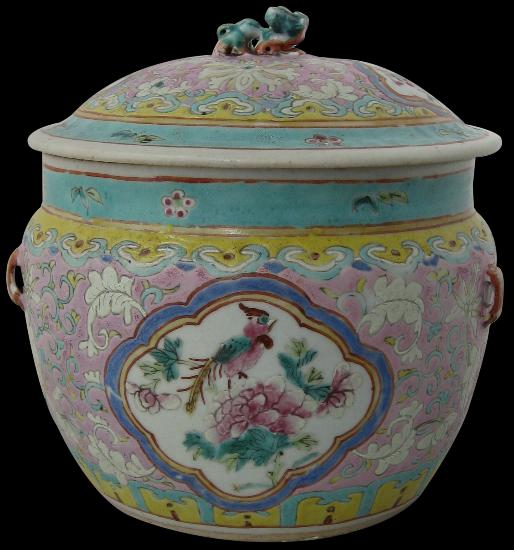
Straits Chinese Kamcheng – Baba, Nonya
Straits Chinese Kamcheng
China but for the Straits Market
late 19th century
height: 20.5cm, diameter: 19.8cm
This good-sized covered jar or kamcheng (kamcheng means ‘covered vessel’ or ‘covered teacup’ in Hokkien) was made in China to Straits Chinese (baba/nonya or peranakan) tastes. It is elaborately decorated in a variety of colourful polychromes with a predominantly pink ground. The base is decorated with two main panels each with a bird, most probably a stylised phoenix, sitting on a peony bloom. Scrolling Indian lotus motifs surround the panels. Two pairs of lugs for metal handles are applied to either side of the jar.
The cover is decorated with two panels each containing a bird and blooms. Further decoration includes a green border with more blooms, and Indian lotus scrolling. The cover is surmounted by a crouching green Chinese lion-dog.
The kamcheng is without chips. The rim of the base has a short hairline. The interior shows some old and small star cracks to the glaze. The polychrome glaze has extensive bubbling as a result of the firing process. The piece shows plenty of evidence of use and age.
The precise purpose of kamchengs is unclear. No doubt they were used for some sort of food storage and most probably the precise usage varied from family to family. It is unlikely that they were used as soup tureens because unlike more newly arrived Chinese to the Straits settlements of Singapore, Malacca and Penang, the Straits Chinese did not routinely serve soup with their meals. Kamchengs were however usually commissioned as part of the wedding services ordered from China.
Provenance
UK art market.
References
The Southeast Asian Ceramics Society – West Malaysia Chapter, Nonya Ware and Kitchen Ch’ing, Oxford University Press, 1981; Ho, W.M., Straits Chinese Porcelain: A Collector’s Guide, Times Books International, 1983; Kee, M.Y., Straits Chinese Porcelain, Kee Ming Yuet Sdn Bhd, 2004; Ee, R., et al, Peranakan Museum A-Z Guide, Asian Civilisations Museum, 2008; and Kee, M.Y., Peranakan Porcelain: Vibrant Festive Ware of the Straits Chinese, Tuttle Publishing, 2009.
Inventory no.: 1021
SOLD

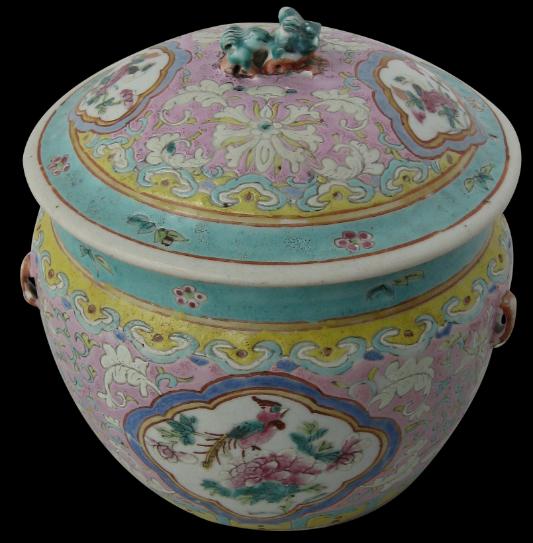
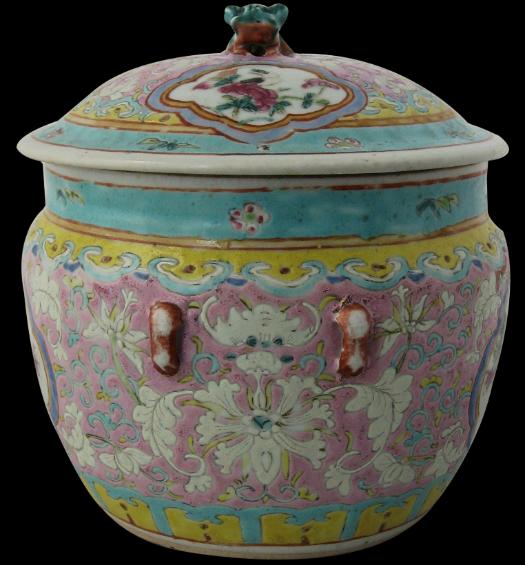
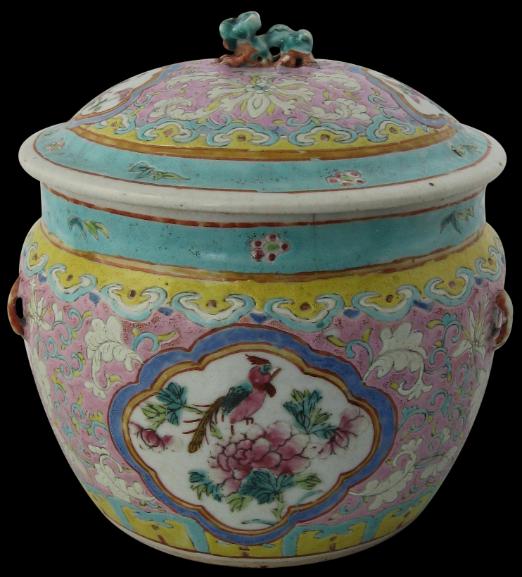
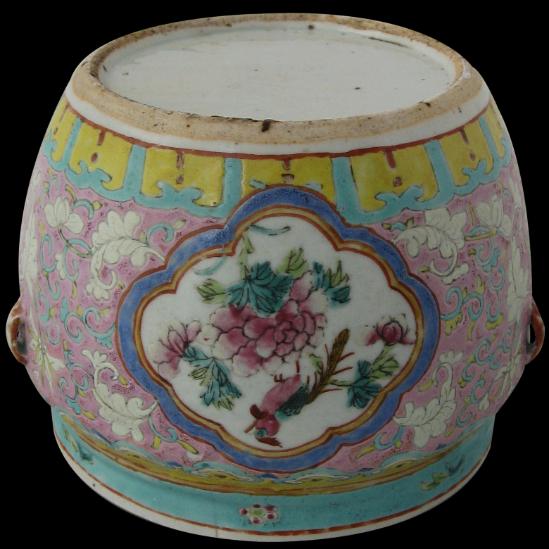
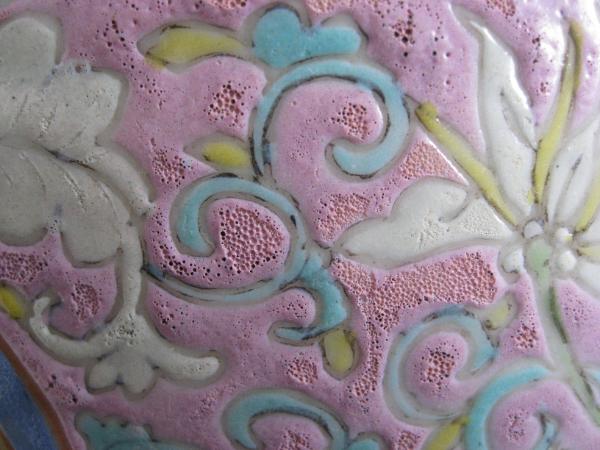
This image shows a close-up of the bubbling to the glaze that resulted during the firing process of this piece. Only with a close-up view such as this are the bubbles apparent.

